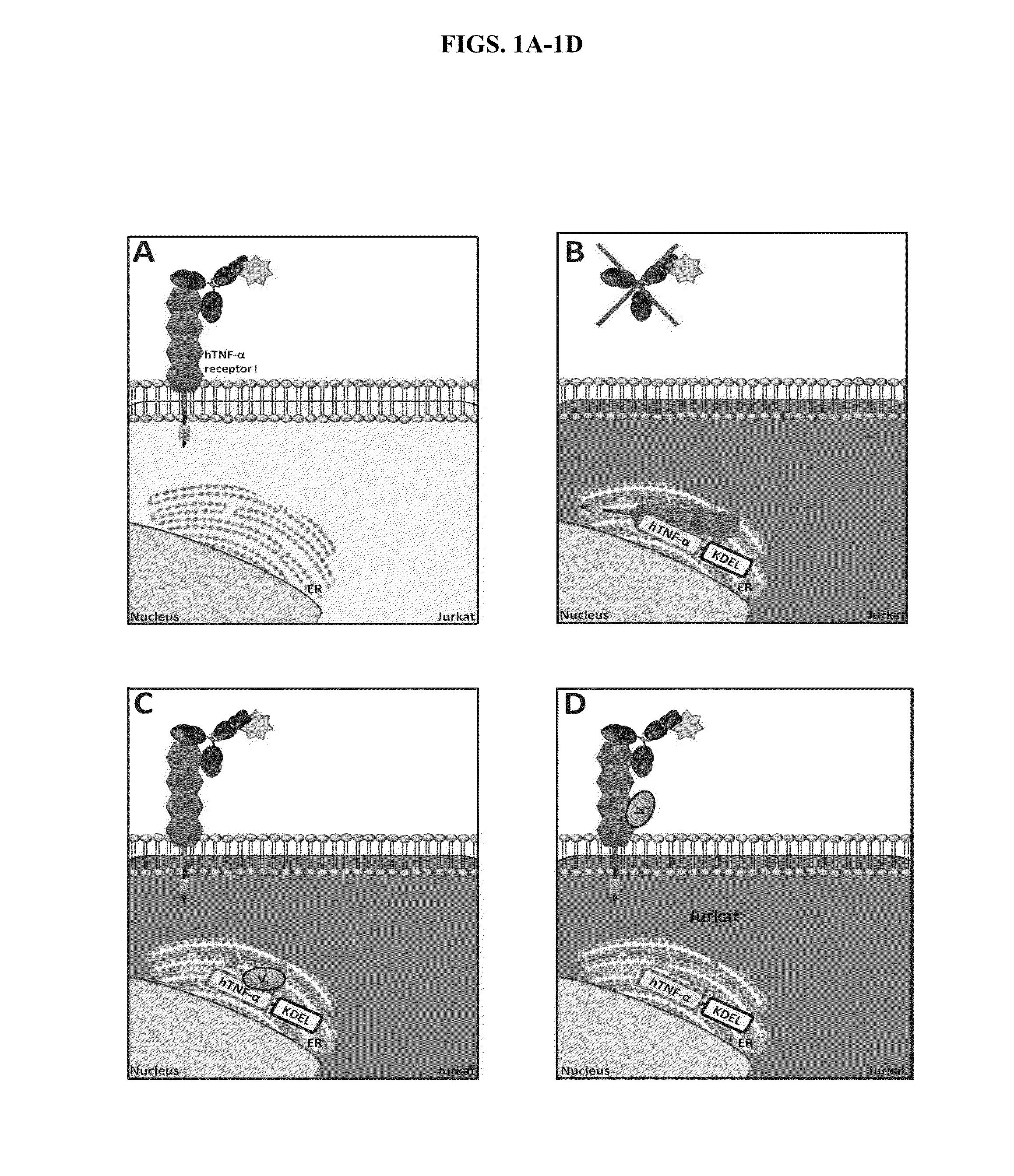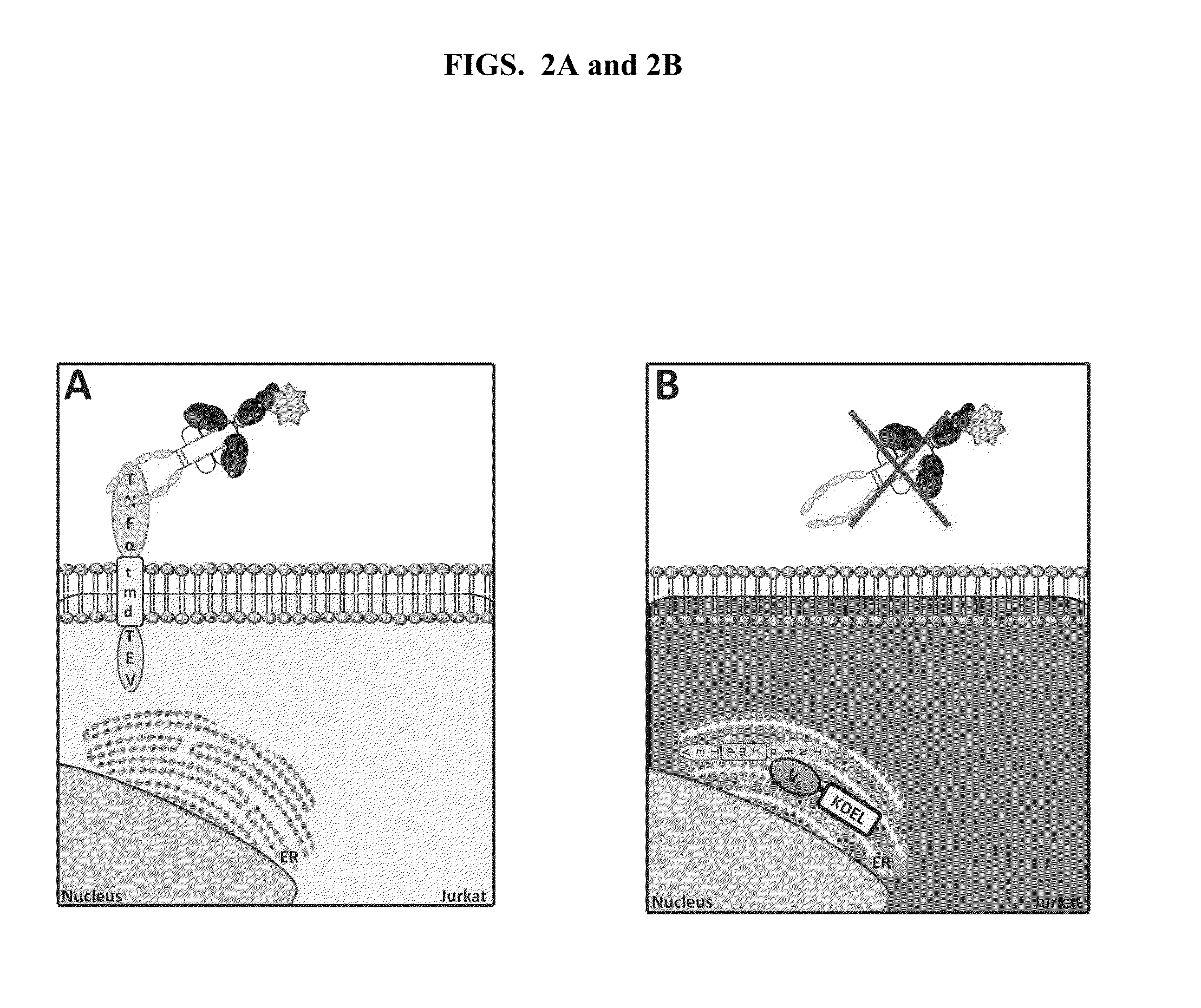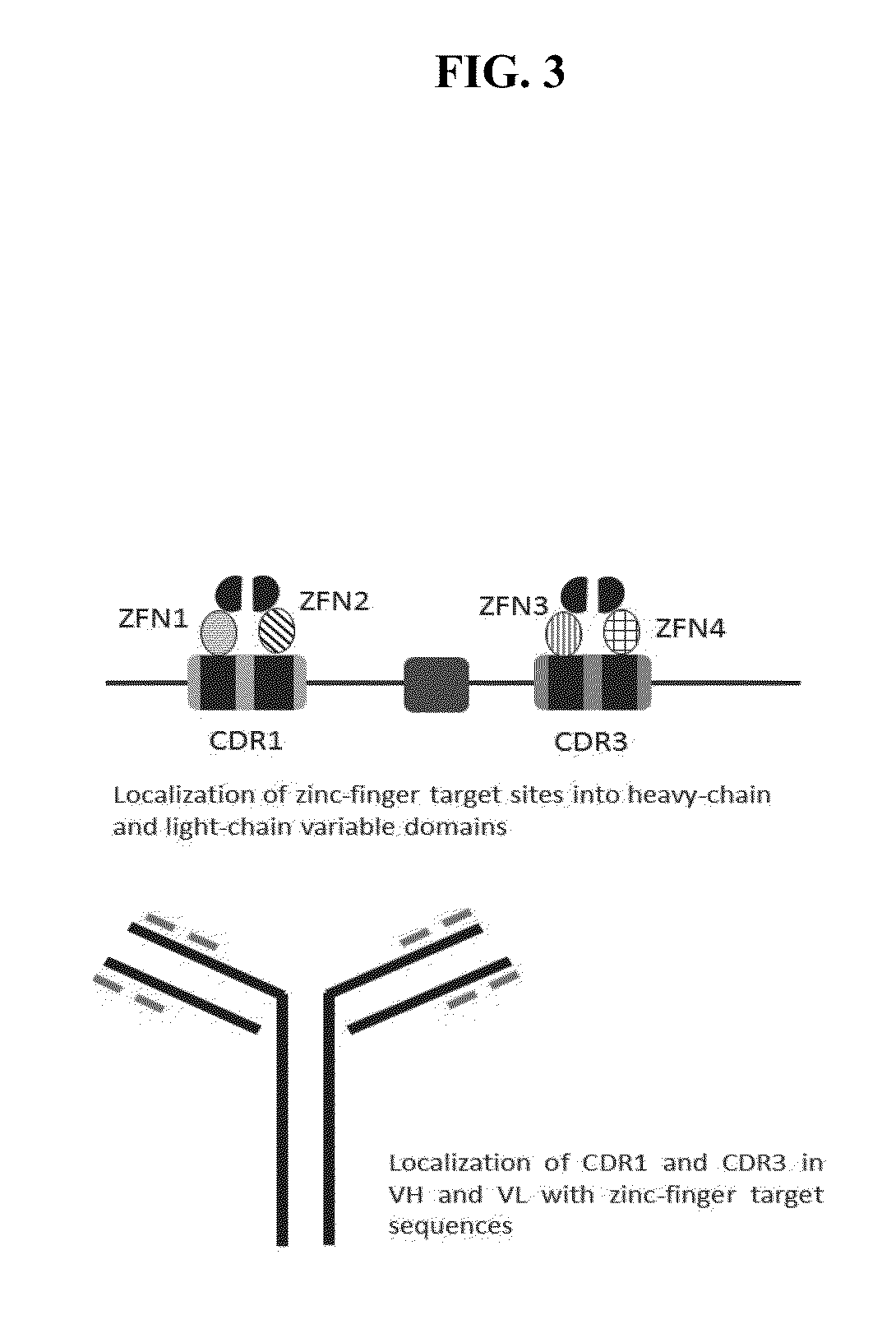Cell-Based Methods for Coupling Protein Interactions and Binding Molecule Selection and Diversification
a cell-based method and protein interaction technology, applied in combinational chemistry, chemical libraries, material testing goods, etc., can solve problems such as appearance on the cell surface, and achieve the effect of improving or optimizing the binding properties of target antigens
- Summary
- Abstract
- Description
- Claims
- Application Information
AI Technical Summary
Benefits of technology
Problems solved by technology
Method used
Image
Examples
example 1
Materials and Methods
Plasmids and Bacterial Cells
[0113]The rabbit VL Single Domain Antibody (SDA) library of 309 antibodies against hTNF-α and the rabbit VL SDA 18 (VL18) cloned into the pT7 vector (e.g., as described in PCT / PT2012 / 000035, F. Aires Da Silva et al., “Anti-tumor necrosis factor-alpha agents and uses thereof” filed Sep. 19, 2012, TechnoPhage, Lisbon, Portugal, and U.S. Provisional Application No. 61 / 538,548, filed Sep. 23, 2011, the contents of which are hereby incorporated by reference in their entirety). The anti-hTNF-α VL dimer library was constructed using the restriction / ligation strategy as previously described (Oliveira S S, Aires da Silva F, Lourenco S, Freitas-Vieira A, Santos A C C, et al. (2012), Biotechnology and Applied Biochemistry 59: 193-204). The rabbit VL SDA F63 cloned in the pComb3X vector was selected by phage display against gp41 and deimmunized (e.g., as described in PCT / PT2012 / 000035, F. Aires Da Silva et al., “Anti-tumor necrosis factor-alpha a...
example 2
Cell Based Assay to Select and Evolve Antibodies that Retain Target Molecules / Ligands in the ER
[0128]HEK293T cells were used for the expression and production of antibody-encoding lentiviral particles, in particular, antibodies coupled to the ER retention signal KDEL (SEQ ID NO:1) (antibody-KDEL (“KDEL” disclosed as SEQ ID NO:1)). To this end, HEK293T cells were co-transfected with pVL18-IRES-DsRed and with pVSVG, pREV, and pGagPol in the proportions of 1.5:0.2:1:2, respectively. After 48 hours, lentiviral particles were harvested and used to transduce cell lines JLTRG-R5-TNF-TEV or JLTRG-R5-TNF-TEV-Tax. Cells were resuspended in a lentiviral preparation with polybrene (8 μg / mL) and subjected to spinoculation at 930×g for 90 minutes at 32° C. As a control for the percentage of transduced cells, equal amounts of JLTRG-R5 cells were transduced, also by spinoculation, with an equal amount of lentiviral particles used to transduce the aforementioned cell lines. After 6 hours, the cells ...
example 3
Cell Based Assay to Select Antibodies that Neutralize / Disrupt a Ligand Pair Binding Interaction
[0129]HEK293T cells were used to produce the antibody-encoding lentiviral particles. Therefore, the cells were co-transfected with pVL18-IRES-DsRed, and pVSVG, pREV, pGagPol. After 48 hours, lentiviral particles were collected and used to transduce the cell line JLTRG-R5-TNFKDEL (“KDEL” disclosed as SEQ ID NO:1). The lentiviral particles were typically used in an amount that yielded approximately 60%-80% transduction efficiency; in general, 2.5×105 cells in 250 μL of RPMI+FBS plus 750 μL of lentiviral particles in each well of a 24-well plate. The JLTRG-R5 cells were resuspended in the lentiviral preparation with polybrene (8 μg / mL) and subjected to spinoculation at 930×g for 90 minutes at 32° C. As a control for the percentage of transduced cells, equal amounts of JLTRG-R5 cells were transduced, also by spinoculation, with an amount of lentiviral particles equal to that used to transduce ...
PUM
| Property | Measurement | Unit |
|---|---|---|
| Length | aaaaa | aaaaa |
| Nucleic acid sequence | aaaaa | aaaaa |
| Light | aaaaa | aaaaa |
Abstract
Description
Claims
Application Information
 Login to View More
Login to View More - R&D
- Intellectual Property
- Life Sciences
- Materials
- Tech Scout
- Unparalleled Data Quality
- Higher Quality Content
- 60% Fewer Hallucinations
Browse by: Latest US Patents, China's latest patents, Technical Efficacy Thesaurus, Application Domain, Technology Topic, Popular Technical Reports.
© 2025 PatSnap. All rights reserved.Legal|Privacy policy|Modern Slavery Act Transparency Statement|Sitemap|About US| Contact US: help@patsnap.com



